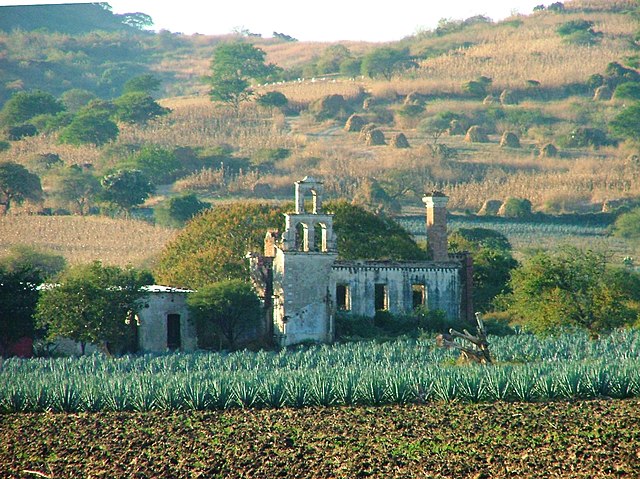An ejido is an area of communal land used for agriculture in which community members have usufruct rights rather than ownership rights to land, which in Mexico is held by the Mexican state. People awarded ejidos in the modern era farm them individually in parcels and collectively maintain communal holdings with government oversight. Although the system of ejidos was based on an understanding of the preconquest Aztec calpulli and the medieval Spanish ejido, since the 20th century ejidos have been managed and controlled by the government.
Ejido in Cuauhtémoc
Agriculture in Mexico has been an important sector of the country’s economy historically and politically even though it now accounts for a very small percentage of Mexico’s GDP. Mexico is one of the cradles of agriculture with the Mesoamericans developing domesticated plants such as maize, beans, tomatoes, squash, cotton, vanilla, avocados, cacao, various kinds of spices, and more. Domestic turkeys and Muscovy ducks were the only domesticated fowl in the pre-Hispanic period and small dogs were raised for food. There were no large domesticated animals.
Agave plants and a ruined hacienda house in Jalisco
Indian Collecting Cochineal from a nopal cactus with a Deer Tail by José Antonio de Alzate y Ramírez (1777)
Chinampas and canals, 1912.
Hacienda de San Antonio Coapa and a train, by José María Velasco (1840—1912).





